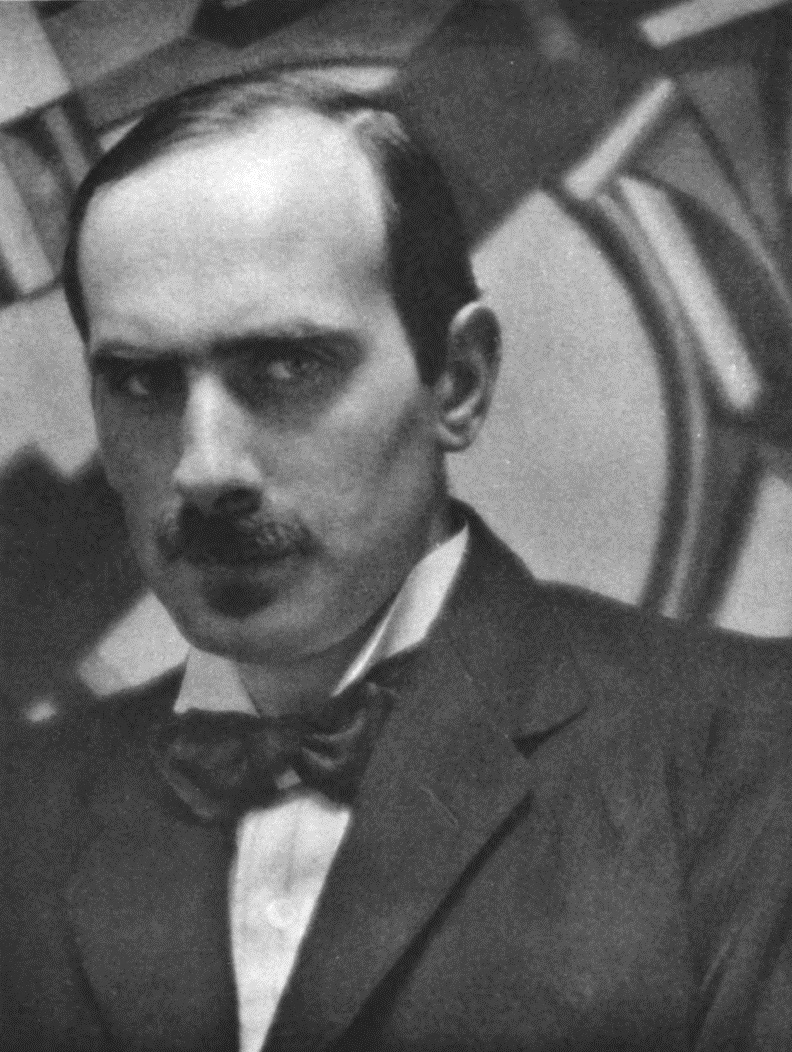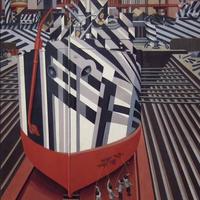More about Edward Wadsworth
Works by Edward Wadsworth

Sr. Contributor
Edward Wadsworth was a well-known camoufleur — an artist who worked to confuse and dazzle the minds of his viewers, or, more specifically, the opposing armies in World War I.
Wadsworth worked in the Royal Naval Volunteer Reserve as an intelligence officer before he was recruited into the dazzle camouflage project. His work in painting ships during the war influenced his art for years, such as in Dazzle-ships in Drydock at Liverpool. He was only one of several artists that were a part of the dazzle camouflage project, but his name has become the most recognizable due to the several dazzle ship paintings created after the war. When speaking to the press about his work on the project, he referred to the dazzle camouflage patterns he created as a visual code, unbreakable to the German U-boats.
Wadsworth became a critics’ darling with his dazzle painting. At exhibitions showcasing the work of camoufleurs who had worked for the armed forces of different nations, the critics were singularly focused on praising his dazzle paintings above the rest. His work continued to captivate the critics for years, though one raised the question of whether his work had actually been successful in practice.
After employing the use of dazzle camouflage, the English navy did see a decrease in ship sinkings. Some high ranking officers argued that other factors such as additional escort ships were the reason for the decrease in sinkings. Though its success is arguable, its safe to say that dazzle ships on the whole still fared far better than less fabulous vessels such as the HMS Griper, so the project was far from a failure. The press reported on the decrease in ship sinkings, declared dazzle camouflage a success, and the public began buying up dazzle pajamas, ties, anything that could be "be-dazzled" and bought, was.
When dazzle camouflage was first suggested it was met with a great deal of skepticism. Trippy optical art, such as the work of Bridget Riley, wouldn’t be around for another few decades. If a time traveler had brought back her painting Hesitate, folks would have understood the potential for using paint to visually mess with people right away.
Wadsworth’s success as a camoufleur might attributed to his knowledge of machinery. He was influenced by his father who owned an industrial firm and taught Wadsworth in the hope that he would one day take over the family business. As such, Edward approached his dazzle ships from a technical perspective when planning out his patterns, preferring contrasting vertical lines over the geometric shapes more widely used by other camofleurs.
Sources
- Brichacek, Joseph. “Dazzle Camouflage: The Art of War.” National Museum of American History, May 3, 2016. https://americanhistory.si.edu/blog/2013/07/dazzle-camouflage -the-art-of-war.html.
- Forbes, Peter. Dazzled and Deceived: Mimicry and Camouflage. New Haven, CT: Yale University Press, 2011.
- OBrien, Glenn, and Jean-Philippe Delhomme. How to Be a Man: a Guide to Style and Behavior for the Modern Gentleman. New York, NY: Rizzoli, 2011.
- Saunders, Nicholas J., and Paul Cornish. Contested Objects: Material Memories of the Great War. London: Routledge, 2013.
- Simkin, John. “Edward Wadsworth,” Spartacus Educational. Accessed December 10, 2019. https://spartacus-educational.com/ARTwadsworth.htm.
Featured Content
Here is what Wikipedia says about Edward Wadsworth
Edward Alexander Wadsworth ARA (19 October 1889 – 21 June 1949) was an English artist initially associated with the Vorticism movement. In the First World War he was part of a team involved in the transfer of dazzle camouflage designs to ships for the Royal Navy. After the war his maritime landscapes and still-life compositions using tempera were infused with a surrealistic mood - although he never exhibited with the British surrealists. In the early thirties and in the early forties his work was mainly abstract. He made a significant contribution to the development of modern art in Britain in the inter-war years.
Check out the full Wikipedia article about Edward Wadsworth











